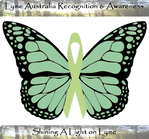Intracranial Hypertension / Constant Headaches
Idiopathic intracranial hypertension (IIH), "sometimes called by the older names benign intracranial hypertension (BIH) or pseudotumor cerebri (PTC), is a neurological disorder that is characterized by increased intracranial pressure (pressure around the brain) in the absence of a tumor or other diseases. The main symptoms are headache, nausea, and vomiting, as well as pulsatile tinnitus (buzzing in the ears synchronous with the pulse), double vision and other visual symptoms. If untreated, it may lead to swelling of the optic disc in the eye, which can progress to vision loss.
Headache resembling tension-type headache as the single manifestation of Lyme neuroborreliosis.
Cephalalgia. 1993 Jun;13(3):207-9.
Brinck T, Hansen K, Olesen J.
Source: Department of Neurology, Gentofte Hospital, University of Copenhagen, Denmark.
Abstract: We present two patients with monosymptomatic headache resembling chronic tension-type headache as the first manifestation of Lyme neuroborreliosis. The headache developed over a few days in both cases and lasted for three months in the first case and for two and a half years in the second case before the diagnosis of Lyme neuroborreliosis was made. Neuroimaging and many laboratory investigations did not lead to the diagnosis, which was only established after lumbar puncture. The CSF in both cases showed high protein, lymphocytic pleocytosis and Borrelia burgdorferi-specific intrathecal antibody synthesis. The headache disappeared completely after treatment with penicillin G. In patients suffering from daily headaches which have developed subacutely, Lyme neuroborreliosis should be considered even in the absence of signs of meningeal irritation. A lumbar puncture should be performed more often than is presently customary and the CSF should be examined for pleocytosis as well as Borrelia burgdorferi-specific intrathecal antibody synthesis.
Cephalalgia. 1993 Jun;13(3):207-9.
Brinck T, Hansen K, Olesen J.
Source: Department of Neurology, Gentofte Hospital, University of Copenhagen, Denmark.
Abstract: We present two patients with monosymptomatic headache resembling chronic tension-type headache as the first manifestation of Lyme neuroborreliosis. The headache developed over a few days in both cases and lasted for three months in the first case and for two and a half years in the second case before the diagnosis of Lyme neuroborreliosis was made. Neuroimaging and many laboratory investigations did not lead to the diagnosis, which was only established after lumbar puncture. The CSF in both cases showed high protein, lymphocytic pleocytosis and Borrelia burgdorferi-specific intrathecal antibody synthesis. The headache disappeared completely after treatment with penicillin G. In patients suffering from daily headaches which have developed subacutely, Lyme neuroborreliosis should be considered even in the absence of signs of meningeal irritation. A lumbar puncture should be performed more often than is presently customary and the CSF should be examined for pleocytosis as well as Borrelia burgdorferi-specific intrathecal antibody synthesis.
Lyme disease presenting with persistent headache.
Pediatrics. 2003 Dec;112(6 Pt 1):e477-9.
Moses JM, Riseberg RS, Mansbach JM.
Source: Department of Medicine, Children's Hospital Boston, Harvard Medical School, Boston, Massachusetts 32115, USA.
Abstract: Increased intracranial pressure in patients with Lyme disease is an uncommon but reported finding. We discuss 2 patients from Lyme endemic areas who initially presented with headache, nausea, and vomiting and were eventually
found to have increased intracranial pressure, a mild cerebrospinal fluid pleocytosis, and positive Lyme titers. It has been shown that increased intracranial pressure in association with neuroborreliosis can lead to blindness. In endemic areas, it is important for practitioners to consider Lyme disease when patients present with persistent headache, especially in those who have evidence of increased intracranial pressure.
Pediatrics. 2003 Dec;112(6 Pt 1):e477-9.
Moses JM, Riseberg RS, Mansbach JM.
Source: Department of Medicine, Children's Hospital Boston, Harvard Medical School, Boston, Massachusetts 32115, USA.
Abstract: Increased intracranial pressure in patients with Lyme disease is an uncommon but reported finding. We discuss 2 patients from Lyme endemic areas who initially presented with headache, nausea, and vomiting and were eventually
found to have increased intracranial pressure, a mild cerebrospinal fluid pleocytosis, and positive Lyme titers. It has been shown that increased intracranial pressure in association with neuroborreliosis can lead to blindness. In endemic areas, it is important for practitioners to consider Lyme disease when patients present with persistent headache, especially in those who have evidence of increased intracranial pressure.
Pseudotumor cerebri in Lyme disease: a case report and literature review.
Pediatr Neurol. 1998 May;18(5):439-41.
Kan L, Sood SK, Maytal J.
Source: Division of Pediatric Neurology, Schneider Children's Hospital, Long Island Jewish Medical Center, Long Island Campus for the Albert Einstein College of Medicine, New Hyde Park, New York 11040, USA.
Abstract: Pseudotumor cerebri is an unusual presentation of Lyme disease. The case of an 8-year-old girl with pseudotumor cerebri secondary to acute neuroborreliosis is reported. She presented with acute onset of headache, papilledema, sixth nerve palsy, increased intracranial pressure, and cerebrospinal fluid pleocytosis. Serum and cerebrospinal fluid Lyme antibodies were positive. Twelve reported cases that mostly presented with systemic findings and signs of Lyme disease before development of pseudotumor cerebri were reviewed. We conclude that acute neuroborreliosis can present with pseudotumor cerebri as an initial manifestation. It is important to include Lyme disease in the differential diagnosis of pseudotumor cerebri in an area endemic for Lyme disease.
Pediatr Neurol. 1998 May;18(5):439-41.
Kan L, Sood SK, Maytal J.
Source: Division of Pediatric Neurology, Schneider Children's Hospital, Long Island Jewish Medical Center, Long Island Campus for the Albert Einstein College of Medicine, New Hyde Park, New York 11040, USA.
Abstract: Pseudotumor cerebri is an unusual presentation of Lyme disease. The case of an 8-year-old girl with pseudotumor cerebri secondary to acute neuroborreliosis is reported. She presented with acute onset of headache, papilledema, sixth nerve palsy, increased intracranial pressure, and cerebrospinal fluid pleocytosis. Serum and cerebrospinal fluid Lyme antibodies were positive. Twelve reported cases that mostly presented with systemic findings and signs of Lyme disease before development of pseudotumor cerebri were reviewed. We conclude that acute neuroborreliosis can present with pseudotumor cerebri as an initial manifestation. It is important to include Lyme disease in the differential diagnosis of pseudotumor cerebri in an area endemic for Lyme disease.

